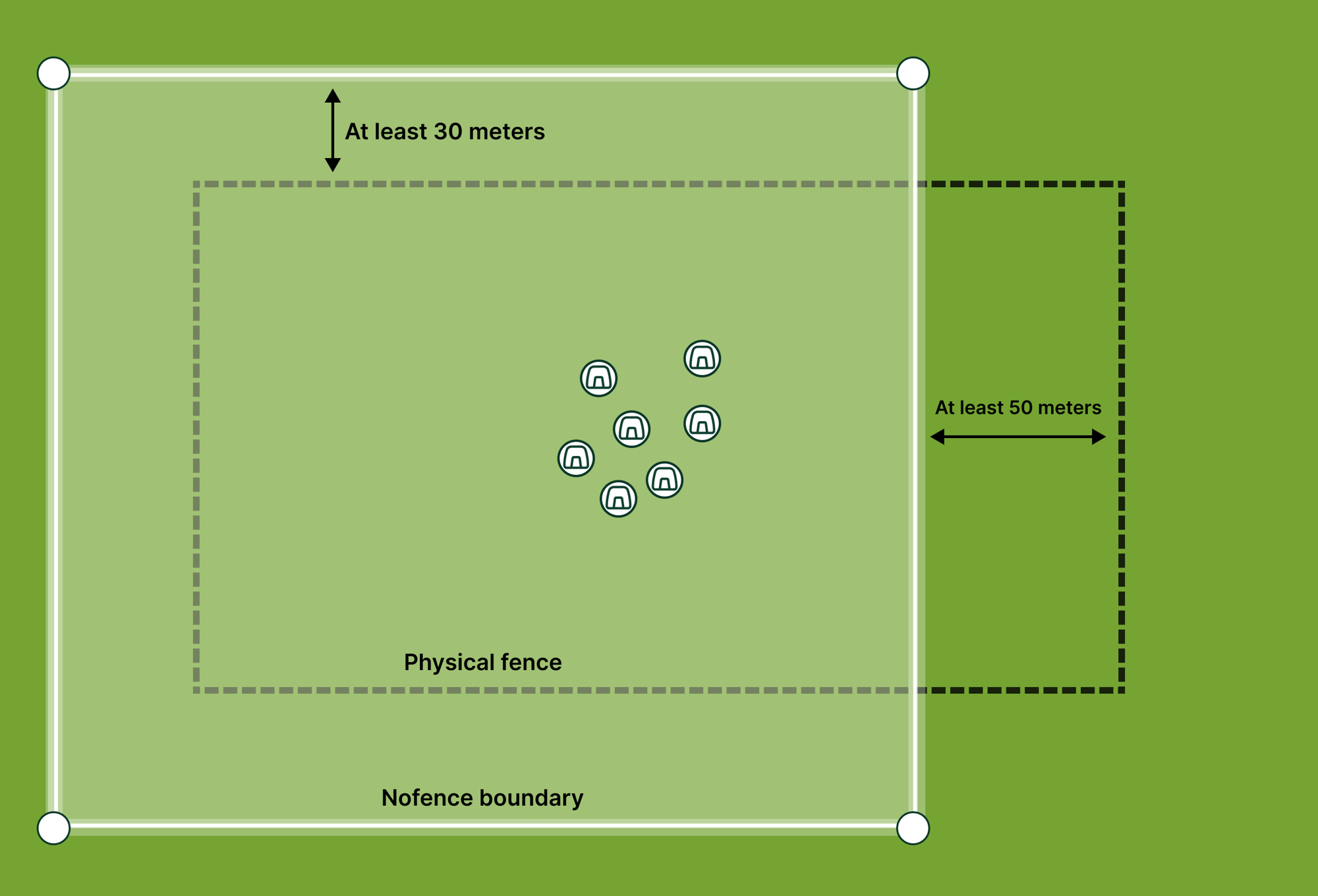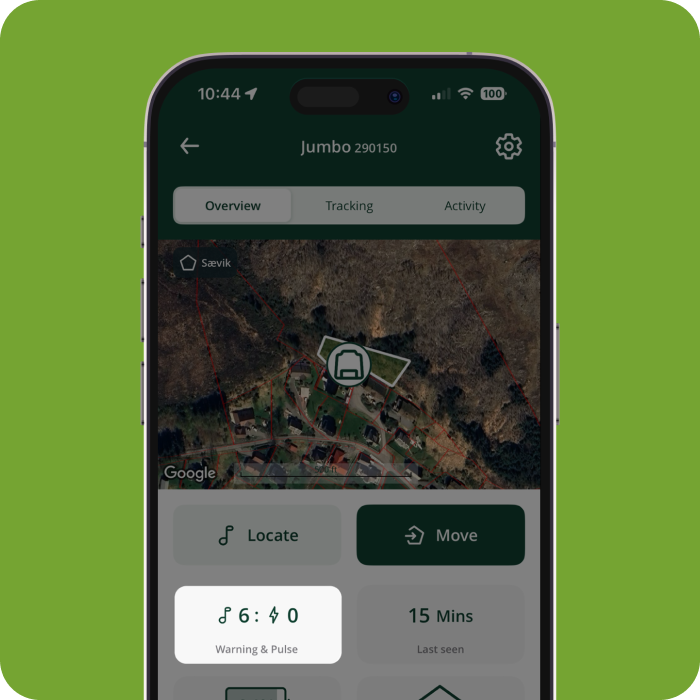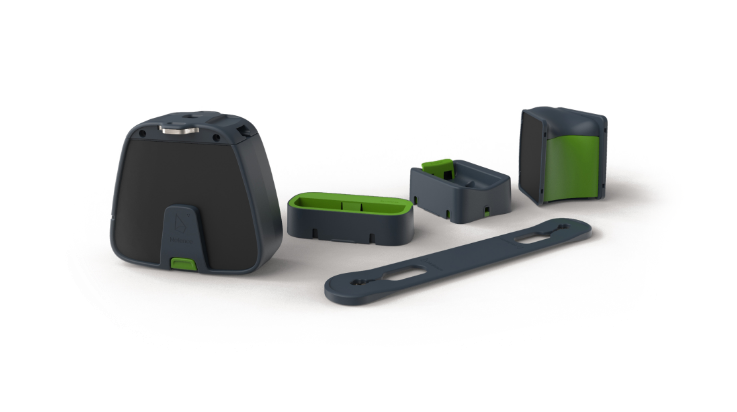The Nofence collar has two modes: Operating Mode and Teach Mode. Teach Mode is a feature designed to help livestock learn how to respond to the collar’s warning sound, prompting them to turn around to avoid the electric pulse.
How does it work?
In Teach Mode, the warning sound stops as soon as the individual turns back toward the pasture. This helps them connect the sound with their movement.
If the animal triggers the sound again, it always starts from the lowest pitch. Predictable cues like this help livestock learn faster and stay relaxed.
Once the animal turns back 20 times without needing a pulse, Teach Mode automatically turns off and the collar switches to Operating Mode.
Preparation
-
All adult individuals must wear collars during training. Livestock follow herd behavior, so individuals with collars may ignore warnings if uncollared livestock cross the boundary first.
-
Make sure collars fit properly to avoid skin irritation or breathing issues. Adjust the fit so it’s secure but not too tight or too loose.
Training pasture principles
-
Choose a small, fully fenced area with a physical fence for initial training.
-
The location must have good mobile and GPS coverage.
-
Keep the pasture small enough for the herd to meet the Nofence boundary during training, but large enough for the herd to stay within the boundary for at least one week.
- The Nofence boundary (shown in white) is where the livestock are contained. Using the physical fence (shown in black) as a guide, place one side of the virtual fence inside it, with the other three sides sitting 30 meters outside the physical fence.
- Position the Nofence boundary across grazing areas the livestock are naturally drawn to. Leave at least 50 meters beyond the boundary so animals can respond to the warning and turn back without reaching the physical fence.
- Ensure that the combination of physical and virtual boundaries is simple and understandable for the herd. Make sure to avoid sharp angles or narrow corridors.

As a general rule, livestock need 1–2 weeks in the training pasture before moving to a fully virtual pasture. Once they understand the connection between the audio warning and their behaviour, you can safely move them to new pastures without a physical fence.
During early training, it’s common for animals to cross the boundary after receiving their first pulse. Keep some feed at hand to help lure them calmly back into the Nofence pasture.
It’s important to stay present during the learning phase until you see the animals consistently turning back when they hear the audio warning.
- Let livestock approach the boundary naturally.
- Watch how they react to the warning sound, they should turn back.
- When they turn back, the sound stops immediately. This helps reinforce the behaviour.
- Repeat the process until animals show clear understanding.
Keys to success:
- Take your time. Let the livestock explore and understand the system at their own pace.
- Check in regularly during the first days to make sure everything is going smoothly.
- Stay steady and confident. Your livestock will follow your lead.
Observe behavior daily (first 3-7 days):
- Watch how your livestock behave when they approach the boundary.
- Signs they’re learning well:
- They stop or turn back as soon as the warning sound starts.
- Over time, you see fewer and fewer warning sounds triggered.
- Livestock stay calm and confident within the pasture boundary.
Use the Nofence App:
- Check the app for notifications about warnings and pulses.
- In Teach Mode, you should see plenty of warnings but ideally very few pulses.
- The app confirms when an animal has turned back 20 times without receiving a pulse. That’s when the collar exits Teach Mode automatically.
Look for changes in movement patterns:
- Animals should graze confidently within the set boundaries.
- After a few days, you’ll notice that there is much less interaction with the boundary and few if any pulses.

Sign up to get updates, tips, and stories from farmers using Nofence.

